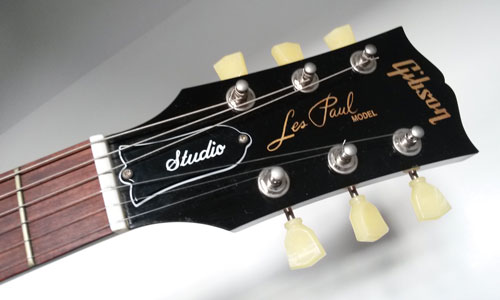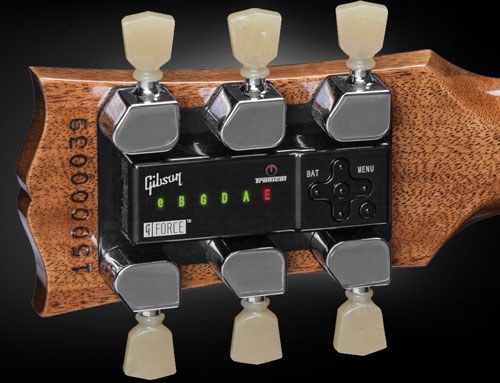Damage & Dissonance
Sure, we're used to seeing rockers break guitars. But depending on the six-string being thrown, a broken guitar can ruin a rock star's entire weekend.
35+
The number of guitars Pete Townsend smashed in 1967 alone, according to an analysis by TheWho.net. The guitar-smashing phenomenon happened almost by accident. He did it once on stage after he accidentally cracked the headstock of his Rickenbacker, but found the public's response so welcoming that he eventually started doing it at every single show. (Our audience targeting is bad, so just in case you're reading, Bryan: During the summer of '69, Pete broke just three guitars.)
Five attempts to salvage broken guitars owned by rock stars
- When Hurricane Sandy hit the East Coast in 2012, one band that suffered damage more than any other was The Black Crowes, whose storage space was flooded. That led the band to reach out to a few luthiers who could salvage their treasured instruments, which talk to angels. RS Guitarworks played a key role in saving Rich Robinson's Gibson ES-335.
- Kings of Leon isn't a band known for smashing guitars, but things happen. After a frustrating bout with busted sound, Caleb Followill tore apart his vintage Gibson guitar on stage. Problem was, it was a Gibson ES-325, a guitar with massive sentimental value that he frequently plays at shows. Fortunately, Gibson helped him out and repaired it for him, ensuring he'd be able to play "Sex On Fire" for another day. (Editor's note: Maybe this wasn't a good idea?)
- Kurt Cobain was a notable user of cheap guitars of all sorts, and he left a trail of busted amps that went back for miles. Perhaps the most famous guitar that he destroyed was a Fender Stratocaster built in Japan, which he smashed while in the studio recording "Endless, Nameless" on Nevermind. The guitar was eventually repaired, but around the time Nevermind was released, he smashed the guitar again during a live performance of "Endless, Nameless" in Chicago. The smashed guitar is currently on display at the EMP Museum in Seattle.
- Slash of Guns 'n' Roses has so many guitars that he has a Facebook page dedicated to them, and that page has more than 100,000 fans. (Slash himself has more than 11 million.) But the one guitar Slash turns to more than any other is a guitar that was so unloved that it was a "factory second" that Gibson couldn't put into the retail chain. Slash, wanting to keep his high-quality "replica" Les Pauls safe at home, bought two "factory second" six-strings that he could beat up on tour. One of them has pretty much lived as hard as Slash has—its neck has been broken numerous times and it has a number of cigar burns right on the body. But he still plays it. (He can't play the other; it was stolen from his apartment in 1995.)
- Muse's Matthew Bellamy knows what it's like to smash a guitar or 140. He smashed that many six-strings during his band's 2004 world tour, setting a Guinness record. But occasionally he breaks a guitar he really likes. That guitar, the Manson Red Glitter, was heavily used by Bellamy, in part because it had a built-in MIDI touch pad. But despite the fact that he loved the device, which he nicknamed "Santa," it didn't stop the device from getting damaged repeatedly on tour. For a while, Bellamy would get it fixed, but during a show at the Staples Center, Bellamy's guitar rack got knocked over due to a stage malfunction, damaging the Red Glitter beyond the point of repair. His solution? He's a rock star; he just bought a new one.
"We can’t believe that it happened. I don’t think anything can really remedy this. We’ve been remunerated for the insurance value, but it’s not about the money. It’s about the preservation of American musical history and heritage.”
— Dick Boak, the director of the Martin Guitar Museum, discussing an accident that took place on the set of The Hateful Eight last year, in which Kurt Russell smashed a vintage guitar, assuming it was an inexpensive prop. It wasn't, and Russell destroyed the guitar before anyone had the chance to replace it with a cheap equivalent. (Jennifer Jason Leigh, who was playing the guitar seconds before it was smashed, was aware. She was "horrified.") Boak noted that the damage to the 1870s-era six-string Martin acoustic guitar was so severe that it couldn't be repaired. "As a result of the incident, the company will no longer loan guitars to movies under any circumstances,” Boak told The Independent.

(Rachmaninoff/Wikimedia Commons)
Enough about broken guitars; what about broken guitar companies?
Gibson Guitars is a pretty well-known company, and one that makes devices well-regarded by musicians. (Of the guitarists we've mentioned so far, a number of them regularly play Gibsons on tour and in the studio.)
Considering all that, you'd imagine that Gibson is a company with respect to spare. But recent stories about the brand suggest something else entirely. The trouble started in 2011, when Gibson was raided by the U.S. Fish and Wildlife Service for illegally exporting wood from parts of the world where doing so was illegal.
The situation turned the company into something of a rallying cry among the political right in 2010, as the situation screamed "regulation gone nuts." That was helped along by Gibson CEO Henry Juszkiewicz, who spoke up about the controversy.
“The federal bureaucracy is just out of hand,” Juszkiewicz said, according to The Daily Beast. “And it seems to me there’s almost a class warfare, of companies versus people, rich versus poor, Republicans versus Democrats …and there’s just a lack of somebody that stands up and says, ‘I’m about everyone. I’m really about America and doing what’s good for the country and not fighting these little battles.’”
Things got more complicated from there. The company's Glassdoor reviews are stunningly negative, with many pointing the finger at Juszkiewicz's very hands-on process. (Just 18 percent of those who reviewed Juszkiewicz approve of him.)
Eventually, Gawker's rabble-rousing Hamilton Nolan drew attention to Juszkiewicz's management style. In 2014, Nolan was forwarded an email written by the CEO, who denied a high-level employee his request for a day off just before Thanksgiving. Juszkiewicz then went further to criticize the employee for taking advantage of the company's PTO policy, before pledging to make top-down HR changes.
"It is not alright to leave early Friday afternoon or arrive late on Monday morning," Juszkiewicz wrote. "It is not alright to take extended lunches. The list of unprofessional behavior goes on."
For his part, Juszkiewicz said that the employee had faked being sick, and that he wasn't really as much of a stickler for PTO as he had suggested.
But that seed of doubt in Juszkiewicz's leadership skills, reinforced by a later piece on Gawker written by Nolan, has raised some deeper questions about the company—particularly as it has started to move away from making just guitars to building electronics. In recent years, the company has been accused of a decline in quality, while jacking up the prices of its models.

Gibson's terrible decision to shove a ton of electronics into its guitars
Last year, Gibson took two separate leaps that raised concerns for longtime fans of the brand. First, the company shifted toward consumer electronics, to the point where three-quarters of its revenue now comes from products unrelated to making music. Second, and more troubling for the purists, was the fact that Gibson did a massive upgrade of its devices in 2015, adding a bunch of extra electronics to the mix, including a so-called "robotic tuner" that automatically ensures the guitar is in the right key. Gibson spent $40 million on the effort, then passed the costs on to consumers.
James Brill, a writer for the guitar site Reverb, explained the controversy as such:
We all rolled our eyes at the earlier notion of the robot tuners, and the announcement of a wider neck, brass “zero-fret nut”, lower profile frets, and titanium saddles had us all wondering what exactly is going on at Gibson HQ. But what shocked us all was the huge price increase. The Les Paul Standard is now the price of a Fender Custom Shop model, as well as high-end makers of Gibson-influenced designs, such as PRS, Collings, Heritage, Knaggs, and countless other well-respected makers.
Ultimately, Brill found that the features, while interesting, were ultimately not worthy of the severe cost increase.
"As much as I love the impulse towards innovation, sometimes an old recipe is truly already perfect," Brill added.
But the company seems to be caught in a game of having to impress highly technical players who know a lot about guitars—which is why they spend $4,500 on them. Oddly, instead of creating features that impress the techies, they're making improvements that make the devices easier to play, which doesn't make sense, considering that if you're buying a guitar for ease of use, you're probably spending $250, tops (on a Fender).
The result of the outcry over the design changes—which were key to a credit downgrade for the company—led the company to reverse course entirely and revert to its prior approach and style for the 2016 model year, while selling guitars with all the doodads at a higher price point.
Gibson guitars aren't iPhones, and no amount of additional tech is going to change that.
Bryan Adams' guitar folly is far from the first experience of guitar damage caused by the process of air travel. And it's not even the most famous at this juncture.
That honor goes to a guy named Dave Carroll, a Canadian singer-songwriter who made a splash in 2009. While on tour with his band Sons of Maxwell in the prior year, he spotted United Airlines employees carelessly throwing around instruments on the tarmac, and then reacted in horror after finding out that his $3,500 Taylor guitar was significantly damaged. Carroll faced a significant hassle in getting this situation fixed, until he decided to use his greatest weapon: music.
He wrote an autobiographical song called "United Breaks Guitars," which scored 15 million views on YouTube and created a PR nightmare for the airline. United employees—who had proven downright unhelpful before—were suddenly quick to fix the problem, which was having an impact on the company's stock price, and Carroll became more famous for a broken guitar than he ever did for anything else.
Carroll, these days, has parlayed his moment of viral success—which, despite his clear frustration at the situation, is packaged as an upbeat country song—into a career as a public speaker on the issues of customer service. (The name of his company? Big Break Solutions. Clever.)
"If customers have the ability to communicate their experiences very easily, then brands can’t just own a message anymore by having the most money to make the glitziest ad," Carroll said in a recent interview.
Considering this incident happened nearly eight years ago and he's still getting mileage out of it, that's impressive.
Carroll can carry a tune, but in the end, it was a tune that carried him.
:format(jpeg)/2018/01/ln0zxmwybcg1ua7nv99c-1.gif)
/2018/01/ln0zxmwybcg1ua7nv99c-1.gif)

/uploads/ernie_crop.jpg)